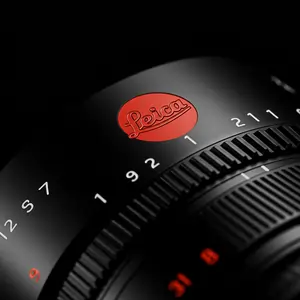When it comes to photography, few names evoke as much reverence as Leica. Leica has been synonymous with precision engineering, unparalleled optical quality, and timeless design for over a century. At the heart of Leica’s reputation are its legendary lenses, which have shaped the way we capture the world. From iconic street photography to groundbreaking scientific imaging, Leica lenses have left an indelible mark on the art and science of photography. In this blog, we’ll explore Leica camera lenses’ history, technology, and enduring appeal.
A Brief History of Leica Lenses
Leica’s story began in 1914 when Oskar Barnack, an engineer at Ernst Leitz Optische Werke, developed the Ur-Leica, the first 35mm camera. This revolutionary device not only changed photography but also set the stage for Leica’s lens-making legacy. The first Leica lens, the Leitz Anastigmat 50mm f/3.5, debuted in 1925 alongside the Leica I camera. Renamed the Elmar 50mm f/3.5, it became a cornerstone of Leica’s optical lineup.
Over the decades, Leica lenses have been at the forefront of innovation. The Summicron 50mm f/2 (1954) introduced unparalleled sharpness and contrast, while the Noctilux 50mm f/1.2 (1966) pushed the boundaries of low-light photography. Today, Leica continues to produce lenses that blend cutting-edge technology with traditional craftsmanship.
What Makes Leica Lenses Special?
Leica lenses are revered for their optical performance, build quality, and meticulous attention to detail. Here’s what sets them apart:
1. Optical Excellence
Leica lenses are designed to deliver exceptional sharpness, contrast, and color rendition. The company employs advanced optical formulas, high-quality glass, and precision coatings to minimize aberrations, distortion, and flare. Leica’s APO (Apochromatic) lenses, for example, correct chromatic aberrations to an extraordinary degree, ensuring true-to-life colors and stunning clarity.
2. Precision Engineering
Each Leica lens is a masterpiece of engineering. Made in Germany, they are assembled by hand with tolerances measured in microns. The use of premium materials like brass and aluminum ensures durability, while the smooth focus and aperture rings provide a tactile, satisfying user experience.
3. Compact and Lightweight Design
Leica lenses are known for their compact, minimalist design. Unlike many modern lenses, which prioritize size and weight for versatility, Leica focuses on creating lenses that are both portable and optically superior. This philosophy stems from the brand’s roots in 35mm photography, where portability was key.
4. Timeless Aesthetics
Leica lenses are as much about form as they are about function. Their sleek, understated design has remained largely unchanged for decades, making them instantly recognizable. A Leica lens isn’t just a tool; it’s a statement of craftsmanship and heritage.
Iconic Leica Lens Series
Leica’s lens lineup is diverse, catering to photographers of all genres. Here are some of the most iconic series:
1. Summicron
The Summicron series is perhaps Leica’s most celebrated lineup. Known for their f/2 maximum aperture, these lenses strike a perfect balance between speed, size, and optical performance. The Summicron 50mm f/2 is a legend, revered for its sharpness and versatility.
2. Summilux
For those who need more light-gathering capability, the Summilux series offers lenses with an f/1.4 aperture. These lenses are ideal for low-light photography and shallow depth-of-field effects. The Summilux 35mm f/1.4 is a favorite among street and documentary photographers.
3. Noctilux
The Noctilux series is Leica’s answer to extreme low-light photography. With apertures as wide as f/0.95, these lenses are capable of capturing stunning images in near darkness. The Noctilux 50mm f/0.95 is a marvel of optical engineering, offering a unique bokeh and dreamy rendering.
4. APO-Summicron
The APO-Summicron lenses represent the pinnacle of Leica’s optical prowess. Designed to eliminate chromatic aberrations, these lenses deliver unparalleled sharpness and color accuracy. The APO-Summicron 75mm f/2 is a standout, often used for portraiture and fine art photography.
5. Elmarit
The Elmarit series features lenses with an f/2.8 aperture, offering a more compact and affordable alternative to the Summicron and Summilux lines. Despite their smaller size, Elmarit lenses maintain Leica’s signature optical quality.
Leica Lenses in the Digital Age
As photography transitioned from film to digital, Leica adapted its lenses to meet the demands of modern sensors. The introduction of the Leica M8 in 2006 marked the beginning of Leica’s digital era, and the company has since developed lenses optimized for digital imaging.
1. Improved Coatings
Digital sensors are more reflective than film, which can lead to flare and ghosting. Leica addressed this by developing advanced lens coatings that reduce reflections and improve contrast.
2. Micro-Contrast Enhancement
Leica’s digital lenses are designed to enhance micro-contrast, capturing fine details and textures with exceptional clarity. This is particularly important for high-resolution sensors found in modern cameras.
3. Collaboration with Smartphone Brands
In recent years, Leica has partnered with smartphone manufacturers like Xiaomi and Huawei to bring its optical expertise to mobile photography. These collaborations have resulted in smartphones with Leica-branded lenses, offering users a taste of Leica’s legendary image quality.
Why Photographers Love Leica Lenses
Leica lenses have a cult following among photographers, and for good reason. Here’s why they inspire such loyalty:
1. Unmatched Image Quality
Leica lenses consistently deliver images with stunning sharpness, rich colors, and beautiful bokeh. Whether you’re shooting portraits, landscapes, or street photography, a Leica lens will elevate your work.
2. Emotional Connection
Using a Leica lens is an experience. The tactile feedback, the precision mechanics, and the knowledge that you’re holding a piece of photographic history create a deep emotional connection.
3. Investment Value
Leica lenses are built to last, both in terms of durability and optical relevance. Many vintage Leica lenses are still in use today, and they often appreciate in value over time.
4. Status Symbol
Owning a Leica lens is a badge of honor. It signifies a commitment to quality and a passion for photography. For many, it’s the ultimate status symbol in the world of cameras.
The Future of Leica Lenses
As technology advances, Leica continues to innovate while staying true to its heritage. The company is exploring new materials, such as aspherical elements and fluorite glass, to further enhance optical performance. Leica is also investing in autofocus technology for its mirrorless systems, ensuring its lenses remain competitive in the modern market.
Moreover, Leica’s collaboration with smartphone brands hints at a future where its optical expertise reaches an even broader audience. By democratizing access to Leica-quality imaging, the company is ensuring its legacy endures in the digital age.
Conclusion: The Art and Science of Leica Lenses
Leica lenses are more than just tools for capturing images; they are a testament to the art and science of photography. With their unparalleled optical quality, precision engineering, and timeless design, they have earned their place in the pantheon of photographic greatness.
Whether you’re a professional photographer or an enthusiast, using a Leica lens is a transformative experience. It’s a reminder that photography is not just about the final image but also about the journey of creation. And in that journey, Leica lenses are the perfect companions.
So, the next time you hold a Leica lens, take a moment to appreciate the craftsmanship, history, and innovation it represents. Because with Leica, you’re not just taking a photo—you’re capturing a piece of art.



